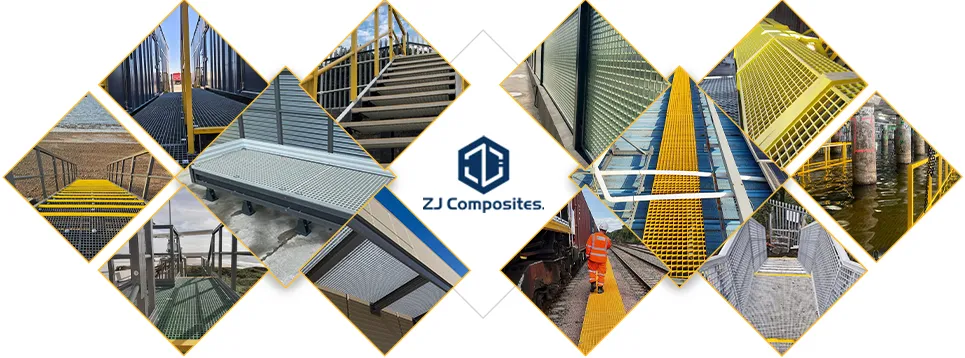loading...
- No. 9, Xingyuan South Street, Dongwaihuan Road, Zaoqiang County, Hengshui, Hebei, China
- admin@zjcomposites.com
- +86 15097380338
- Welcome to visit our website!
Exploring the Benefits and Applications of FRP Bars in Construction Engineering
Understanding FRP Bars The Future of Reinforcement in Construction
In recent years, the construction industry has seen a paradigm shift towards the adoption of advanced materials that not only enhance the strength and durability of structures but also contribute to sustainable practices. One such innovative solution is the use of Fiber Reinforced Polymer (FRP) bars. This article delves into the properties, benefits, and applications of FRP bars, highlighting their significance in modern construction.
What are FRP Bars?
FRP bars are composite materials made from a polymer matrix reinforced with fibers, such as glass, carbon, or aramid. These materials are engineered to provide high tensile strength while remaining lightweight and resistant to various environmental factors. The manufacturing process involves combining the fibers with a resin, which is then cured to form a solid bar. The result is a corrosion-resistant reinforcement solution that can outperform traditional steel reinforcement in several aspects.
Advantages of FRP Bars
1. Corrosion Resistance One of the most significant advantages of FRP bars is their resistance to corrosion. Unlike steel, which can deteriorate in the presence of moisture, salt, and chemicals, FRP bars remain unaffected by these elements. This property makes them particularly valuable in environments subject to harsh conditions, such as coastal areas or structures exposed to de-icing salts.
2. Lightweight FRP bars are significantly lighter than traditional steel bars, making them easier to handle and transport. This reduction in weight can lead to decreased labor costs and a faster construction timeline. Additionally, the lightweight nature of FRP bars allows for the design of more innovative structural systems, reducing the overall dead load of a structure.
3. High Tensile Strength FRP bars boast impressive tensile strength, often exceeding that of conventional steel bars. This characteristic enables engineers to design structures that can withstand greater loads and stresses without compromising safety. Furthermore, the ability to customize the fiber types and orientations in FRP manufacturing allows for specific strength characteristics tailored to meet particular project requirements.
4. Thermal and Electrical Insulation FRP bars do not conduct electricity, making them a safe choice in applications where electrical conductivity is a concern. Additionally, they exhibit low thermal conductivity, which can contribute to energy efficiency in building designs.
frp bar

5. Sustainability As the construction industry increasingly focuses on sustainable practices, FRP bars offer a viable solution. Their long lifespan, reduced maintenance requirements, and recyclability contribute to lower environmental impact compared to traditional materials.
Applications of FRP Bars
FRP bars have been successfully utilized in various applications across the construction domain. Some notable uses include
- Bridge Construction The lightweight and corrosion-resistant properties of FRP bars make them ideal for bridge reinforcement, especially in regions prone to environmental stressors. Their use can prolong the lifespan of bridges while reducing maintenance costs.
- Marine Structures In waterfront and marine construction, where exposure to seawater is a concern, FRP bars offer a durable solution. They are also used in building piers, docks, and other structures that interact directly with water.
- Rehabilitation of Existing Structures FRP bars can be used to strengthen outdated or damaged concrete structures. By reinforcing the existing framework with FRP, engineers can enhance the load-bearing capacity and extend the service life of the structure with minimal disruption.
- Parking Structures The combination of high strength, low weight, and resistance to de-icing salts makes FRP bars a preferred choice for parking garages, which often face challenges related to corrosion.
Conclusion
As construction practices continue to evolve, the integration of advanced materials like FRP bars represents a significant advancement in structural engineering. Their exceptional properties—corrosion resistance, lightweight design, high tensile strength, insulation capabilities, and sustainability—make FRP bars an attractive choice for modern construction needs. As more engineers and architects recognize the benefits of these materials, the future of construction may see an even broader application of FRP bars, paving the way for safer, more durable, and environmentally friendly structures. With ongoing research and development, FRP technology is set to revolutionize the way we approach building and infrastructure design for decades to come.
-
Transform Your Spaces with FRP Grating SolutionsNewsNov.04,2024
-
The Versatility and Strength of FRP RodsNewsNov.04,2024
-
The Excellence of Fiberglass Water TanksNewsNov.04,2024
-
The Benefits of FRP Grating for Your ProjectsNewsNov.04,2024
-
Elevate Your Efficiency with FRP Pressure VesselsNewsNov.04,2024
-
Welcome to the World of FRP Pressure VesselsNewsOct.12,2024
-
Unveiling the Future of Filtration: Why FRP Filter Vessels are a Game ChangerNewsOct.12,2024
